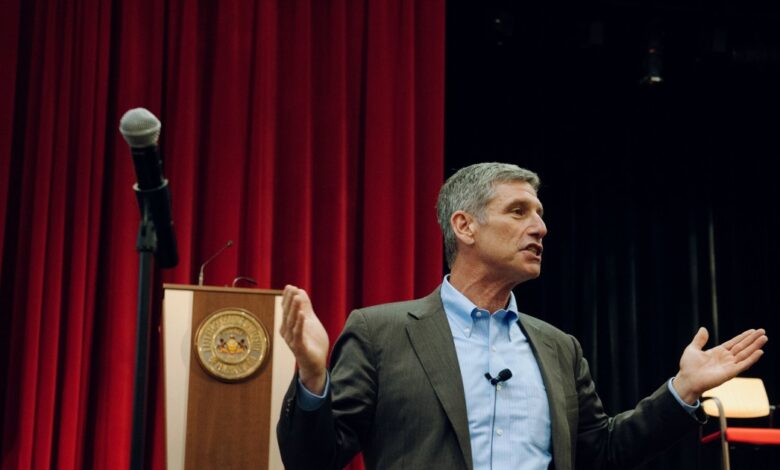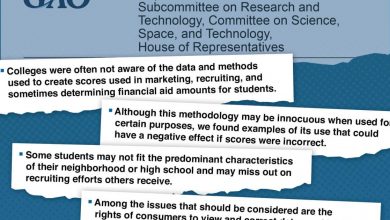The Plan Is ‘Not Perfect,’ but Pa.’s Public-College System Will Turn 6 Campuses Into 2

After a decade of falling enrollments and shrinking state appropriations, Pennsylvania’s State System of Higher Education is taking a major — but controversial — step meant to stem the system’s fiscal woes, shore up academic offerings at struggling institutions, and work more collaboratively with elected officials.
The system’s Board of Governors on Wednesday unanimously approved a plan to consolidate six of the 14 universities into two institutions. In the western part of the state, the campuses at California, Clarion, and Edinboro will merge, and the campuses at Bloomsburg, Lock Haven, and Mansfield will become one institution.
“The steps we are finalizing are things we have been talking about since I joined the board eight years ago,” said David M. Maser, a lawyer and board member. “The plan, while not perfect,” he said, “is a good plan.”
The two institutions that result from the merger will each be led by a single president and leadership team, including enrollment-management and student-support services, and a unified faculty with academic programs shared across all of the three combined campuses in each new college.
Several board members said the vote to consolidate was difficult but necessary, given the state’s demographic trends and the continuing inadequacy of state appropriations.
Sen. Judith L. Schwank, a Democrat in the State Senate and member of the Passhe board, said the vote to approve the mergers was “probably the most difficult vote we’ve taken.”
“For far too long, our system has been neglected,” said Senator Schwank, who said she was voting to approve the merger “with reservations.”
Chancellor Daniel Greenstein, who shepherded the merger plan through approval in Pennsylvania’s General Assembly, as well as through the system board, said that despite widespread opposition from faculty and students, the cost of doing nothing outweighed the risks of the proposal.
In order to boost appropriations to the system, Greenstein said, Passhe needed help not only from the lawmakers who have traditionally supported Passhe, but also from those who are asking for more efficiency and accountability.
The merger proposal has, to some degree, accomplished that, Greenstein said. In July, Gov. Tom Wolf, a Democrat, announced the state would be giving Passhe an additional $200 million over three years to help solve its financial problems and prevent layoffs and furloughs.
That money has not lessened opposition to the mergers. Greenstein’s own analysis of the more than 1,100 public comments received found that a plurality of 43 percent were opposed to the plan, including nearly 60 percent of the faculty members who responded, and nearly half of the students. More than a third of the written comments did not take a position on the merger, Greenstein found, but 15 percent wanted the board to delay the vote and only 7 percent of the written comments supported the plan.
Jamie Martin, president of the union that represents many of the faculty at the Passhe universities, said her members were mostly upset that the process to approve the mergers happened so quickly and during the pandemic, when faculty and students were remote and perhaps not fully engaged.
“I try to be positive,” Martin said, followed by a deep sigh. “Today was a difficult day because so many of our colleagues had spoken out with concerns,” she said. Martin was heartened that the chancellor and several board members had noted that the vote was just the beginning of a much longer process, in which several more details need to be finalized. In addition, she said, the plan as approved by the board is far better than the original proposal in April, including a longer timeline to finalize the mergers.
Among the remaining problems are issues of accreditation, Martin said, especially programmatic accreditation for specific degrees at the campuses to be merged. In addition, the system and campuses will have to sort out what happens to athletic teams on each campus. In the longer term, staff and faculty cuts at the merged institutions may loom.
Higher-education scholars said Passhe’s merger proposal is not surprising, given the demographic trends in the region, the legislature’s longstanding neglect of the system, and the state’s peculiar approach to higher education.
For example, there is little or no statewide coordination of higher education in Pennsylvania, where Passhe campuses must compete for students and state dollars with Pennsylvania State University’s two dozen branch campuses, according to Kevin R. McClure, associate professor of higher education at the University of North Carolina at Wilmington.
“The restructuring of public systems is nothing new,” said McClure. But the Passhe mergers seem ironic, he said, because even if the number of high-school students in the region declines, there are still a large number of working adults who could benefit from earning a degree. “So, it’s an odd moment to contract.”
A part of the rationale for the merger is to expand enrollment and reach out to new populations of students, Greenstein said in his remarks to the board on Wednesday.
But that rings hollow to Andrew Koricich, an assistant professor of higher education at Appalachian State University, who has followed the debate over Passhe with a personal interest — he grew up near the system’s campus in Edinboro, and he studies rural colleges. The system, for example, didn’t collaborate with the state’s community-colleges, which are concentrated entirely in the eastern and southern portions of the state and could serve as a pipeline of potential transfer students and also benefit from offering more upper-division courses that would transfer to a Passhe credential, Koricich said.
A letter from the Pennsylvania Commission for Community Colleges called the merger plan “Passhe-centric” and said it “has taken place without consideration of the programs and services offered by, or the impact on, other sectors.
What galls Koricich most is that the merger of these particular rural institutions seemed to himto be a foregone conclusion, regardless of whether that was what was best.
“As someone who focuses on rural issues,” Koricich said, “these communities have been told what they’ll get.”
“Even if this was always going to be the end result,” he said, there’s a “feeling like your fate is being handed down to you.”
Source link






